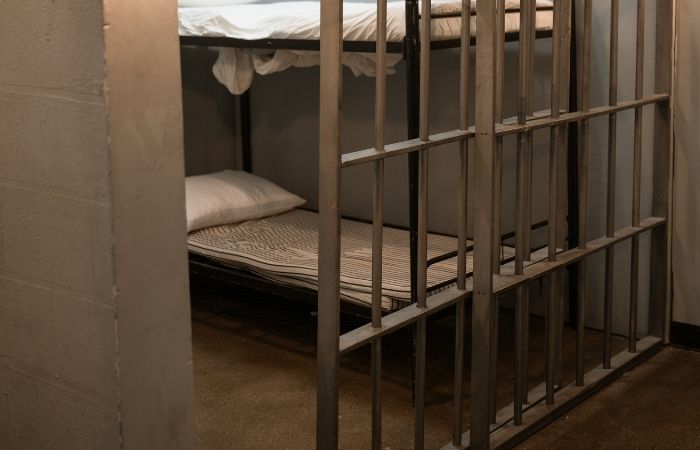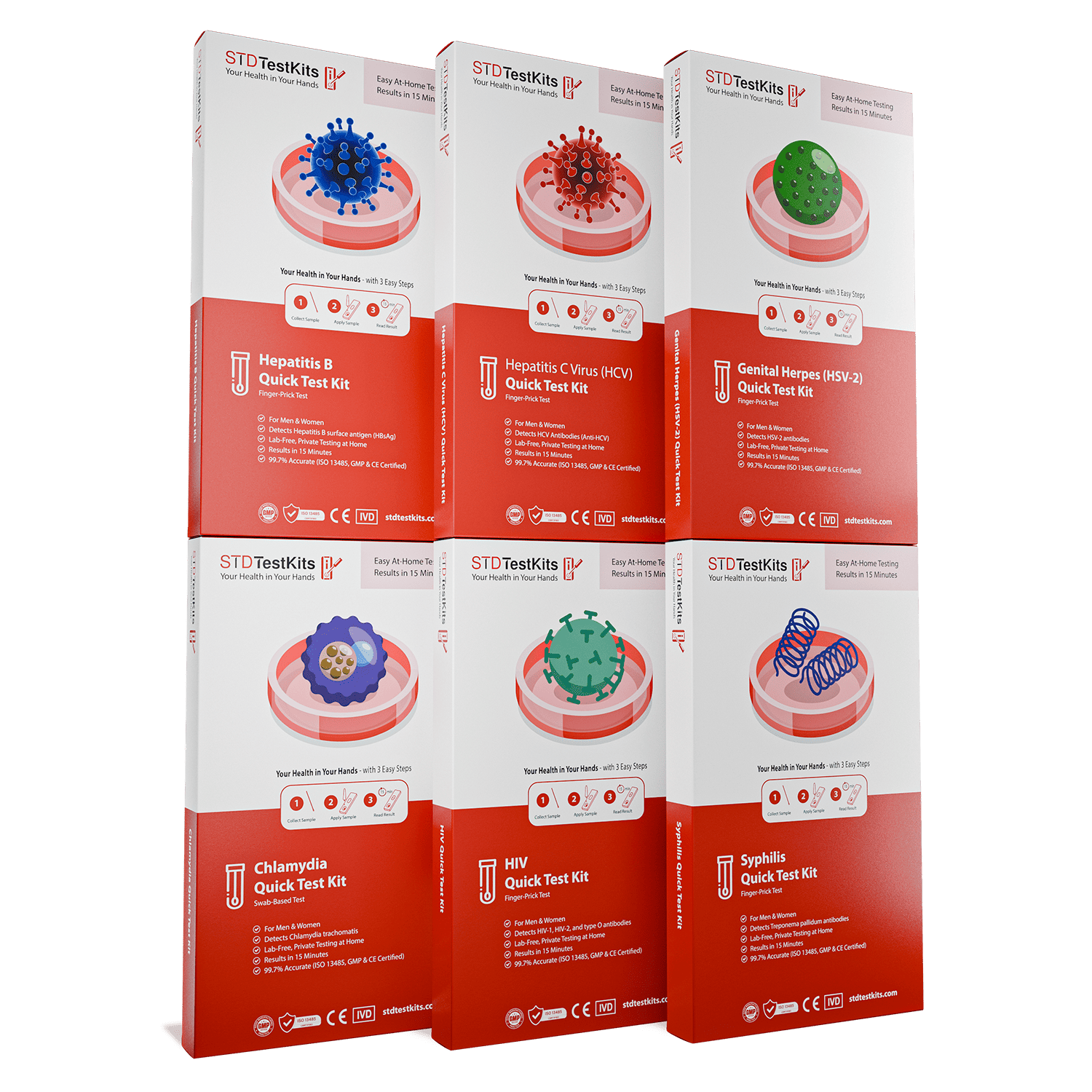What If You Test Too Soon for Gonorrhea? The Truth About False Negatives
Quick Answer: A crime of deliberately transferring non-curable STIs has been considered by the STI task force in Louisiana. In the meantime, the best method available to stop the spread of the STI without waiting for legislation to pass has been at-home testing. There is no stigma attached to this form of testing.
Why Louisiana Is Facing a Sexual Health Emergency
STI rates in Louisiana aren’t just high, they’re the highest in the nation. According to CDC data, the state consistently ranks in the top 3 for gonorrhea, syphilis, and chlamydia. And it’s not just urban areas. Rural parishes, where clinics are scarce and testing is stigmatized, are being hit hard too.
During the Nov. 19 task force meeting, lawmakers like Rep. Pat Moore described being approached by people who’d been knowingly infected by partners. “They wanted justice,” Moore said. But as the meeting continued, it was clear that not everyone agreed on what justice should look like. Should criminalization be part of the STI response? Or does that just create more silence, more shame, and fewer people willing to test or disclose?
One thing is certain: until the structural barriers to testing, education, and treatment are addressed, Louisiana’s STI rates will keep climbing. That’s where this article comes in, we’re breaking down what counts as testing, when to do it, how to protect yourself, and how to take action even when your state can’t seem to agree on a plan.

People are also reading: I Treated a Yeast Infection for Months, It Was an STD
Who This Guide Is For (And Why It Matters)
If you live in Louisiana, or anywhere where STI testing feels punishment rather than prevention, this guidebook has information that’s relevant to you. This manual has been written for those who do not trust the current STI testing available through the healthcare system in their area and who feel that their experience at the clinic will be less than comfortable.
You might be a college student living in Baton Rouge, a truck driver traveling through Shreveport, or a single mother living in Monroe trying to figure out what that burning feeling is. Or maybe you've had a partner disappear on you because they said "clean" before sex, maybe you've never been tested because you were never instructed to because no one needs STDS. Doesn't matter why you're here: you deserve answers, not arrest and a shush.
This guide will walk you through what STI tests actually detect, when they are best used, what the term "window period" actually refers to, and how you can interpret the results. The trade-offs of rapid testing vs. at-home testing vs. clinic STI testing will also be explained, and what to do in the event of a positive test result.
What Actually Counts as an STI Test?
STI tests aren’t all the same, and most people never get told what’s actually being checked. For gonorrhea and chlamydia, the gold standard is a NAAT test (nucleic acid amplification test), which detects the bacteria’s genetic code. These are highly accurate and used by both clinics and at-home test services.
For syphilis, tests detect antibodies in your blood. Early-stage syphilis can sometimes be missed if you test too soon, especially within the first 2 weeks of exposure, so timing matters. The same goes for other infections like HIV or trichomoniasis.
At-home kits use lab-verified tech to screen for multiple STIs at once. You collect the sample yourself (urine or swab), mail it in, and get results securely. No awkward waiting rooms. No side-eyes from receptionists. Just facts.
Want the no-mail option? Rapid test kits give you answers in under 20 minutes and can be done anywhere, bathroom, car, bedroom. They’re best used during peak window periods, which we’ll break down next.
Window Periods: Why Timing Makes or Breaks Your Test
You could have every symptom in the book and still test negative, if you test too early. That’s because STIs take time to incubate. The window period is the time between exposure and when a test can reliably detect the infection. Test too soon, and it might miss the infection entirely. Wait too long, and you risk spreading it unknowingly, or dealing with long-term complications like pelvic inflammatory disease or infertility.
Figure 1. Window periods vary by STI and test type. For the most accurate result, test after the window closes, not during.
Rapid Test vs Lab Test vs Clinic: What Works When
If you’re sitting in your car wondering whether to walk into that free clinic, or you’re Googling “STD test near me” from the bathroom at 2AM, you’re not alone. Most people don’t have a go-to sexual health provider. That’s why knowing your options matters.
Rapid at-home tests are great for immediate answers. They don’t require mailing anything, and many deliver results in under 20 minutes. That’s peace of mind on your schedule. Mail-in lab tests take a little longer (2–5 business days), but they give you lab-grade accuracy. If you’re between exposures or testing as part of routine care, they’re ideal.
Clinic testing is the gold standard when you need treatment the same day, have visible symptoms, or suspect something more serious like secondary syphilis. But clinics in Louisiana are overwhelmed, and in some parishes, they’re hours away. That’s why at-home testing isn’t just convenient. It’s survival-level access.
Figure 2. Each testing option serves different needs. At-home options give control back to the user, especially in underserved areas.
When to Test After Exposure (And Why It’s Not One-Size-Fits-All)
Let’s say you hooked up last weekend. No condom, maybe some drinks were involved. Now your anxiety is spiking, and you're debating whether to test now or wait. Here's what we tell people: it depends on the infection, and when it shows up in the body.
For gonorrhea and chlamydia, day 7 is your early window, and day 14 is your confidence window. If you test too early, you could miss an infection that hasn’t finished incubating. But if you wait too long and have symptoms, the infection could spread, especially in people with uteruses, where STIs can lead to PID or even fertility issues.
Case example: Bri, 22, had unprotected sex on a Saturday and tested herself on Tuesday. The rapid test was negative. But symptoms cropped up by the weekend, burning, spotting, swollen glands. She took a mail-in kit on day 10, and that one was positive. “I almost ignored it,” she said. “But I’m glad I trusted my gut and retested.”
The takeaway? If your test is negative but your body says otherwise, listen. Retesting isn’t overkill, it’s backup. And if you’re not sure where to start, a Combo STD Test Kit gives you a wide-angle view, no guesswork required.

People are also reading: How STDs Hide in Women Symptoms You Might Never Feel
Should We Be Criminalizing STIs?
This is where things get heated. Louisiana lawmakers are now weighing whether intentional STI transmission should be a criminal offense, especially for incurable infections. There’s no question that deliberately infecting someone is wrong. But history shows that criminalization often backfires. People test less. They disclose less. And fear replaces honesty.
Public health experts, including organizations like the CDC and Center for HIV Law and Policy, warn that STI criminal laws disproportionately affect marginalized groups. They’re often enforced unevenly, based on race, gender, or HIV status. And they rarely make anyone safer.
Instead, what works? Access. Education. Confidential testing. Partner notification tools that are anonymous and shame-free. In other words, real prevention. The kind that doesn’t rely on fear or jail time to change behavior.
You don’t need a courtroom to protect yourself. You need a test. You need information. And you need to know what’s happening in your body, before anyone else makes it their business.
What If You Test Positive?
Your test comes back positive, and suddenly everything goes quiet. You might be thinking, “What does this mean for me now?” or “How do I even tell someone?” The truth is, testing positive for an STI, especially something as common as chlamydia or gonorrhea, is not the end of anything. It’s the start of being in control.
Most bacterial STIs are cured with a short course of antibiotics. What matters is treating early, because waiting too long increases the risk of complications like pelvic inflammatory disease (PID), epididymitis, infertility, or transmission to a partner. Even for STIs that don’t have a “cure” (like herpes or HIV), treatments today are highly effective in managing outbreaks, reducing viral load, and stopping further spread.
Think of testing as the moment you stop wondering and start planning. If you're not sure where to begin, check out this STD Risk Checker Quiz to see what your exposure might mean, and what next steps are right for you. It helps break down exposure types, risk levels, and what kinds of testing are recommended based on your situation.
Why Early Testing Changes Everything
Let’s talk numbers for a second. Most STIs don’t cause symptoms in the first few days, or at all. In fact, over 70% of people with chlamydia report no symptoms, and more than 50% with gonorrhea go undiagnosed until a partner tests positive. That’s why waiting for symptoms doesn’t work.
Here’s what early testing actually gives you:
Figure 3. Early detection isn’t just about your body, it’s about your relationships, your choices, and your peace of mind.
What If the First Test Was Negative, But You Still Don’t Feel Right?
Let’s be real, no one wants to test twice. But sometimes, it’s necessary. If your first test was within a few days of exposure, it might have been too early for the infection to show up. The Window Period Guide breaks this down by infection, showing when each STI becomes detectable. For example, gonorrhea is typically detectable after 7 days, while syphilis might not show up until week three or later.
If you’ve got new symptoms (like burning, discharge, or pelvic pressure) after testing negative, don’t write it off. Retest. A second test at the right time is better than clinging to a false negative. You’re not being paranoid, you’re being proactive.
Real case: Tony, 31, tested negative for chlamydia after a high-risk hookup, but started feeling a weird pressure when he peed about a week later. He retested on day 12 and it came back positive.
“The first test gave me peace of mind, but I’m glad I didn’t ignore what my body was telling me.”
You’re Allowed to Be Angry, Confused, or Scared
Especially with Louisiana floating the idea of criminal charges for STI transmission, it’s normal to feel overwhelmed. But the law doesn’t define your health story, you do. Whether you think you got ghosted, lied to, or infected on purpose, you still get to choose what happens next. That might be treatment, rest, reflection, or talking to a therapist or support group.
This space, this article, is for the people who feel stuck. Who don’t want to go to a clinic. Who don’t trust the system. Who think “I should have known better.” We don’t blame here. We test. We act. We move forward. And if you need help doing that discreetly, an at-home test is a damn good start.
FAQs
1. Is it true Louisiana might start locking people up for spreading STIs?
That’s the conversation happening. Lawmakers are debating whether intentional transmission of incurable STIs, like HIV or herpes, should be criminalized. Some people say it's about justice. Others worry it'll scare people away from testing. It’s not law yet, but the fact we’re even here says a lot about how broken things are.
2. I tested positive. Do I have to tell anyone?
You don’t legally have to in most cases, but ethically, yeah, you should. It’s not about confession or drama. It’s about letting people make informed choices. If you're nervous, anonymous partner notification tools exist, and some clinics even do the talking for you. You're not alone in that.
3. What if my partner refuses to get tested?
That sucks, but it happens. You can offer facts, not fear. Send them a link. Share your result. But if they still ghost the conversation, don’t wait around. Protect yourself, test again if needed, and trust your gut. If someone won’t take your health seriously, they don’t get access to your body.
4. I’m symptom-free, do I really need to test?
Yes. Hard yes. Most STIs, especially chlamydia and gonorrhea, can chill in your body without a single red flag. No symptoms doesn’t mean no infection. It means you could unknowingly pass it to someone else, or let it cause long-term damage without knowing.
5. I tested negative last week. Now I’m getting symptoms. What gives?
Could be a few things. Maybe the first test was too early (see our Window Period Guide). Maybe it was the wrong test. Or maybe it’s something else entirely. Listen to your body. If something feels off, trust that. Test again.
6. What’s the deal with faint lines on my test? Am I positive?
Think of it like a pregnancy test: even a faint line is still a result. If it shows up, it counts. Don’t wait around wondering, either retest or move forward like it’s real. Better safe, less sorry.
7. Can I test while I’m on my period?
You can. For urine-based tests, no problem. For swabs, it might be messier but still works. Some folks prefer to wait just for peace of mind, but biologically? Your period doesn’t block STI detection.
8. Will having an STI ruin my chance to have kids?
Not if you catch it and treat it early. STIs like chlamydia and gonorrhea can cause fertility issues if they’re left untreated. But most cases caught early heal without lasting damage. That’s the whole point of early testing, you’re protecting your future, even if you don’t want kids right now.
9. What if I can’t afford a doctor or don’t have insurance?
That’s exactly why at-home testing matters. Kits like the ones we offer are discreet, accurate, and way more affordable than an urgent care visit. No insurance, no paperwork. Just answers.
10. I’m scared I got infected on purpose. What do I do?
First, I'm sorry. That fear is valid, and you're not alone. Whether it was deliberate or careless, your health is still yours to protect. Get tested, document what you can, and talk to someone you trust. And know this: whatever Louisiana decides, your body isn’t a crime scene. It’s still yours.
This Isn’t Just Policy. It’s Personal.
The Louisiana STI task force can debate laws all day, but the truth is, prevention starts before legislation. It starts with a decision to test, to tell the truth, to protect your body and your partners. Whether you support criminal penalties or not, one thing’s clear: we need more access, not more fear.
How We Sourced This Article: This guide has been put together using the best available guidance that has been provided by public health bodies alongside developments in the law in the state of Louisiana and personal stories from testing. Approximately fifteen sources informed the production of this guide, six of which will be mentioned below.
Sources
1. Louisiana Considers Criminalizing Intentional STI Transmission – MSN
2. Planned Parenthood – STDs, Testing, and Safer Sex
3. Sexually Transmitted Infections Surveillance, 2024 (Provisional) – CDC
4. 2023 STD Surveillance State Ranking Tables – CDC
5. 2021 STI Rankings – Louisiana Department of Health
About the Author
Dr. F. David received his MD from the Oregon Health & Science University. He specializes in infectious diseases and STI management. He has been featured in numerous articles due to the value of his work to the medical field. He is a sex-positive medical professional.
Reviewed by: Dr. Nina Hartley, MPH | Last medically reviewed: November 2025
This article is for informational purposes and does not replace medical advice.







